Abstract
Behaviour was studied by real time ultrasound in a group of 80 low risk fetuses between 36 and 42 weeks' gestation. There was close linkage of fetal eye movements, somatic movements and heart rate pattern reflecting three different states. Quiescence (state 1F) was characterised by no eye movements, no somatic movements except for the occasional startle, and a fetal heart rate pattern with little baseline variability. There were two active states: state 2F characterised by continuous eye movements, frequent bursts of somatic movements, and wide baseline variability with accelerations with movement, and state 4F characterised by continuous eye movements with almost continuous somatic movements and a sustained tachycardia. These fulfilled criteria for three of four behavioural states previously described in human fetuses. Cycling of quiescent and active states occurred in 77 (96%) of the fetuses within 100 minutes of starting the recording. 2F was the commonest behavioural state, being seen 58% of the time. 1F was seen 30% of the time, and 4F 9% of the time. During the remaining 3% of observation time the behavioural state was indeterminate.
Full text
PDF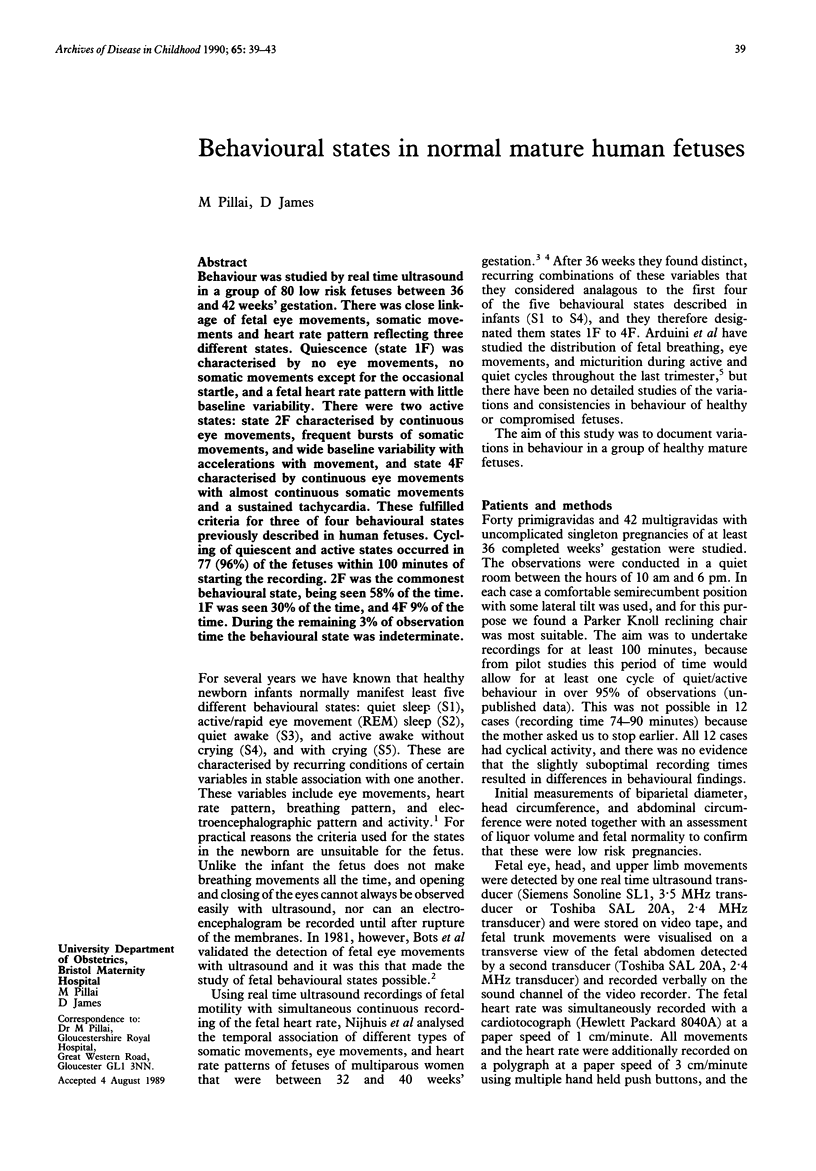
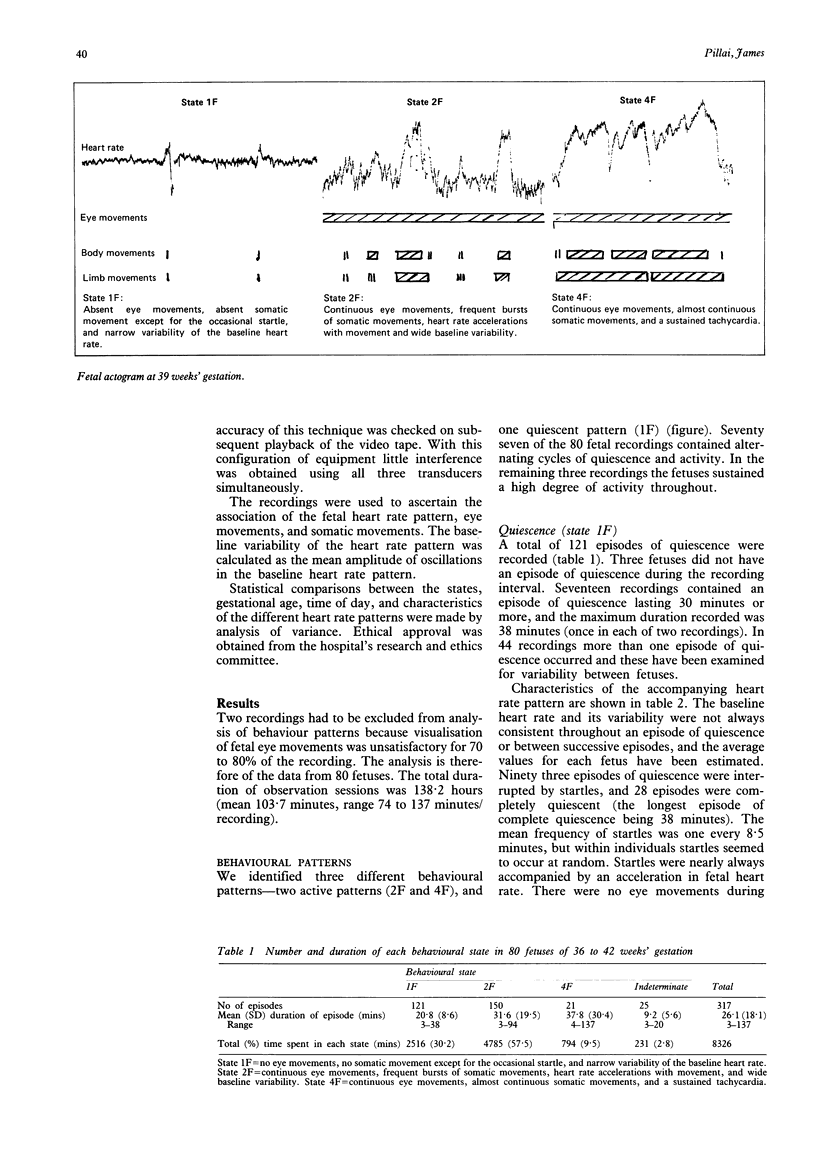
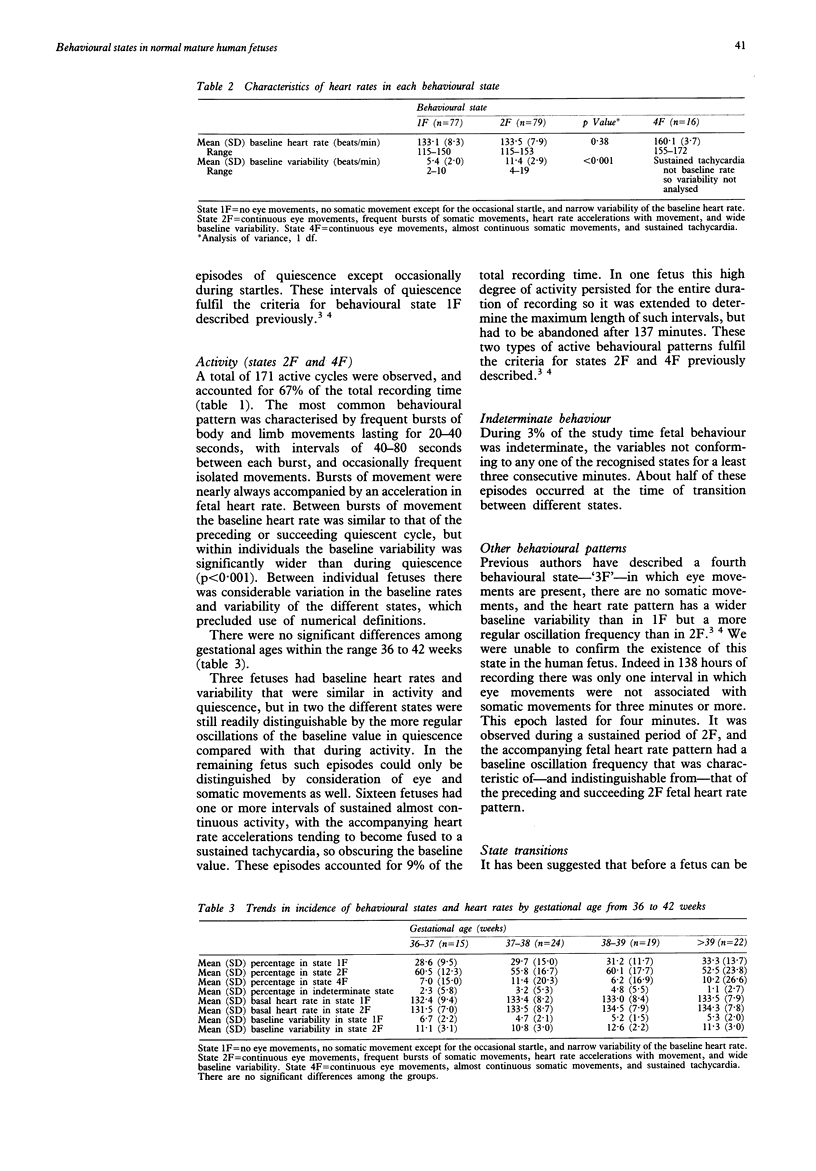
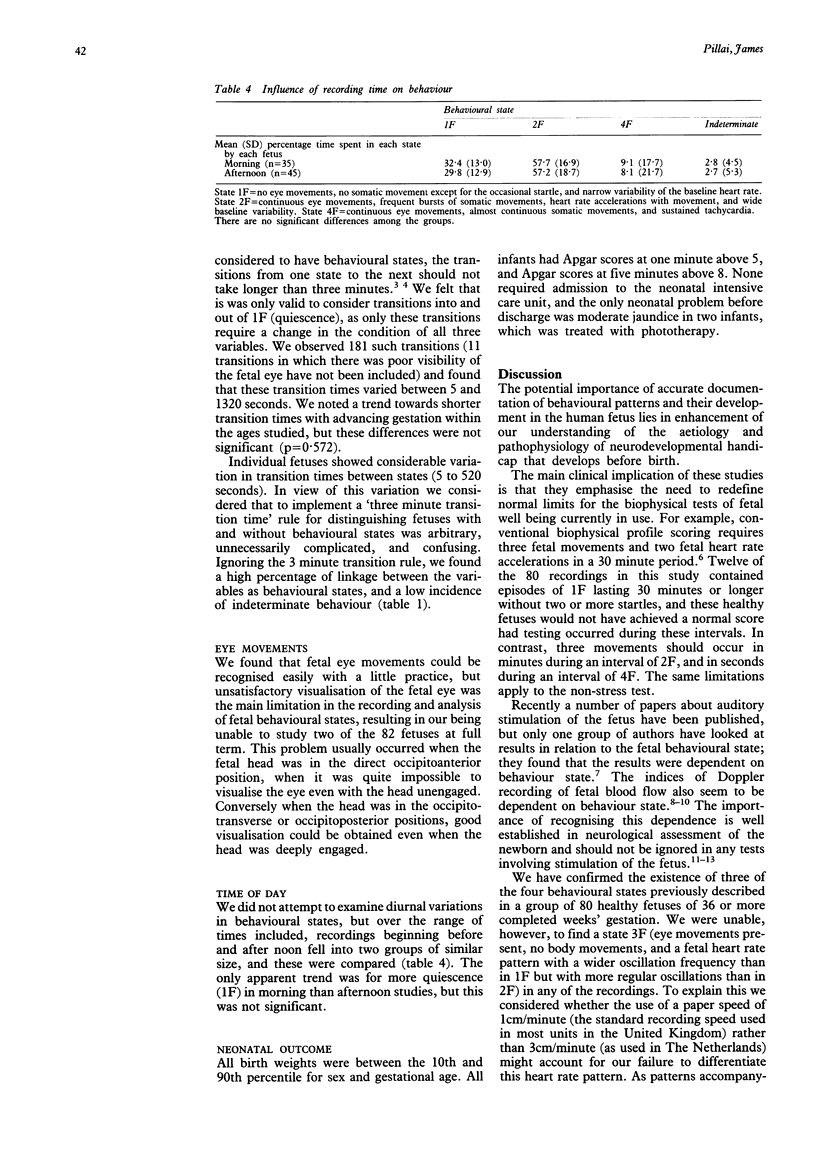
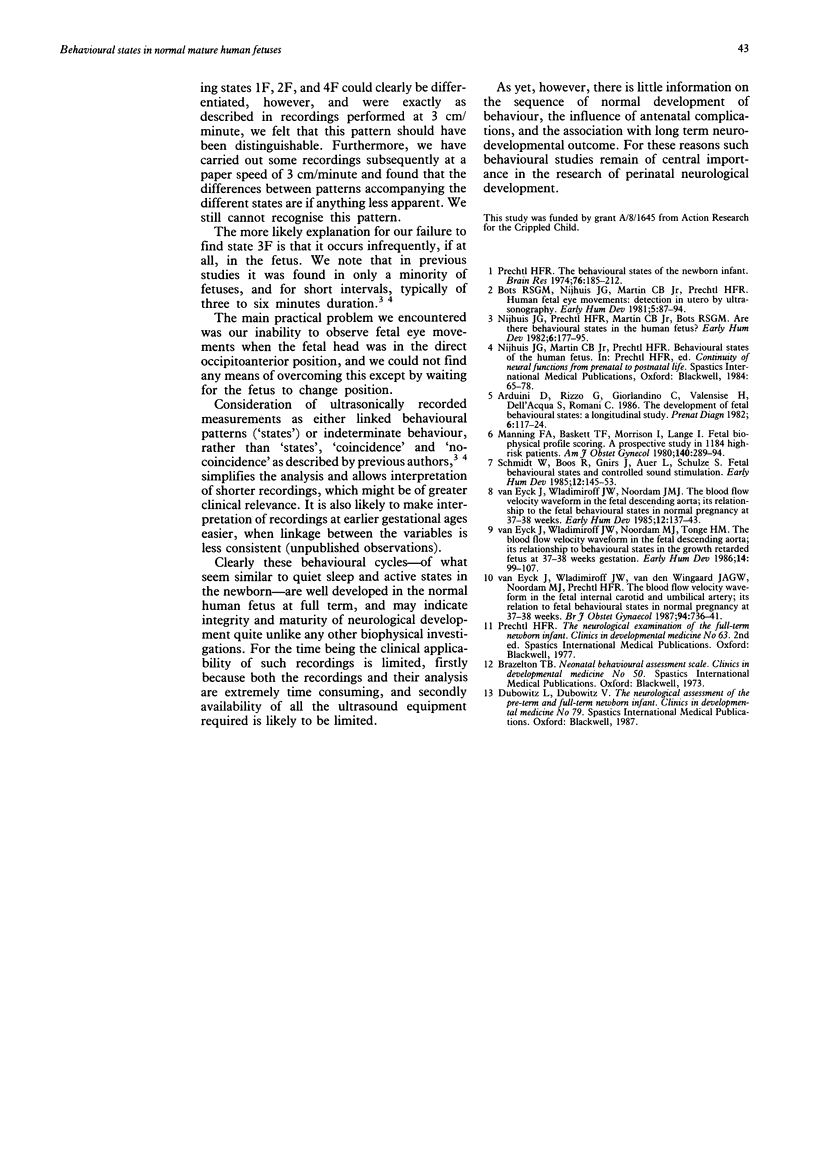
Selected References
These references are in PubMed. This may not be the complete list of references from this article.
- Arduini D., Rizzo G., Giorlandino C., Valensise H., Dell'Acqua S., Romanini C. The development of fetal behavioural states: a longitudinal study. Prenat Diagn. 1986 Mar-Apr;6(2):117–124. doi: 10.1002/pd.1970060207. [DOI] [PubMed] [Google Scholar]
- Bots R. S., Nijhuis J. G., Martin C. B., Jr, Prechtl H. F. Human fetal eye movements: detection in utero by ultrasonography. Early Hum Dev. 1981 Feb;5(1):87–94. doi: 10.1016/0378-3782(81)90074-8. [DOI] [PubMed] [Google Scholar]
- Manning F. A., Baskett T. F., Morrison I., Lange I. Fetal biophysical profile scoring: a prospective study in 1,184 high-risk patients. Am J Obstet Gynecol. 1981 Jun 1;140(3):289–294. doi: 10.1016/0002-9378(81)90275-1. [DOI] [PubMed] [Google Scholar]
- Nijhuis J. G., Prechtl H. F., Martin C. B., Jr, Bots R. S. Are there behavioural states in the human fetus? Early Hum Dev. 1982 Apr;6(2):177–195. doi: 10.1016/0378-3782(82)90106-2. [DOI] [PubMed] [Google Scholar]
- Prechtl H. F. The behavioural states of the newborn infant (a review). Brain Res. 1974 Aug 16;76(2):185–212. doi: 10.1016/0006-8993(74)90454-5. [DOI] [PubMed] [Google Scholar]
- Schmidt W., Boos R., Gnirs J., Auer L., Schulze S. Fetal behavioural states and controlled sound stimulation. Early Hum Dev. 1985 Nov;12(2):145–153. doi: 10.1016/0378-3782(85)90177-x. [DOI] [PubMed] [Google Scholar]
- van Eyck J., Wladimiroff J. W., Noordam M. J., Tonge H. M., Prechtl H. F. The blood flow velocity waveform in the fetal descending aorta: its relationship to fetal behavioural states in normal pregnancy at 37-38 weeks. Early Hum Dev. 1985 Nov;12(2):137–143. doi: 10.1016/0378-3782(85)90176-8. [DOI] [PubMed] [Google Scholar]
- van Eyck J., Wladimiroff J. W., Noordam M. J., Tonge H. M., Prechtl H. F. The blood flow velocity waveform in the fetal descending aorta; its relationship to behavioural states in the growth-retarded fetus at 37-38 weeks of gestation. Early Hum Dev. 1986 Oct;14(2):99–107. doi: 10.1016/0378-3782(86)90115-5. [DOI] [PubMed] [Google Scholar]
- van Eyck J., Wladimiroff J. W., van den Wijngaard J. A., Noordam M. J., Prechtl H. F. The blood flow velocity waveform in the fetal internal carotid and umbilical artery; its relation to fetal behavioural states in normal pregnancy at 37-38 weeks. Br J Obstet Gynaecol. 1987 Aug;94(8):736–741. doi: 10.1111/j.1471-0528.1987.tb03718.x. [DOI] [PubMed] [Google Scholar]


